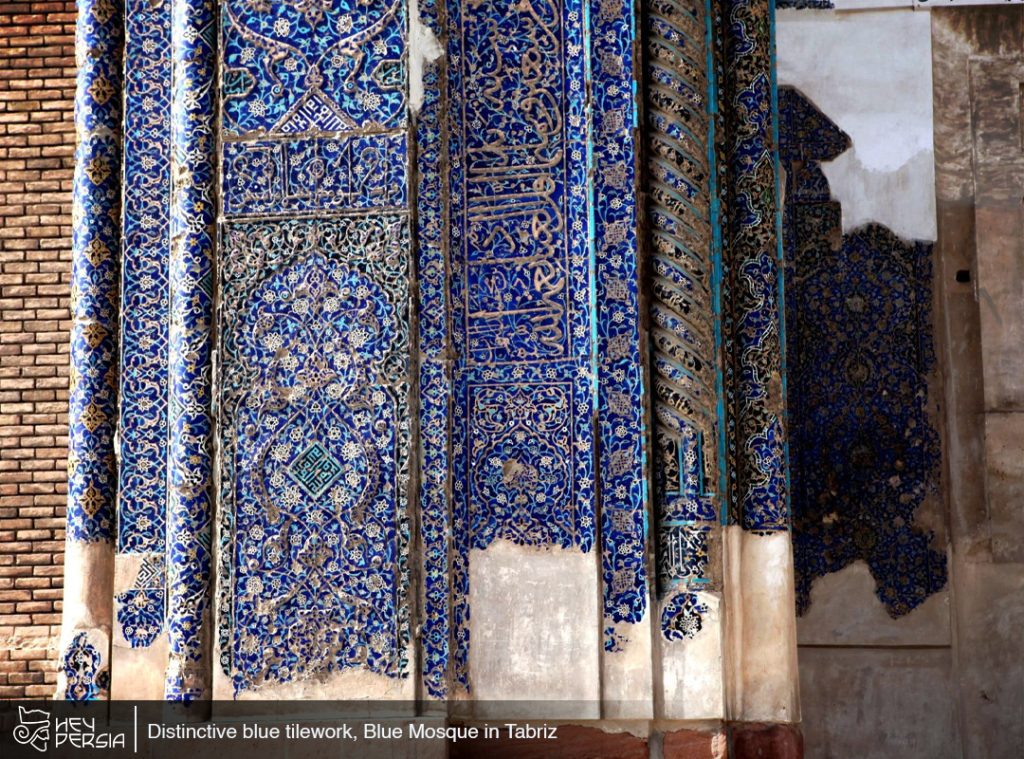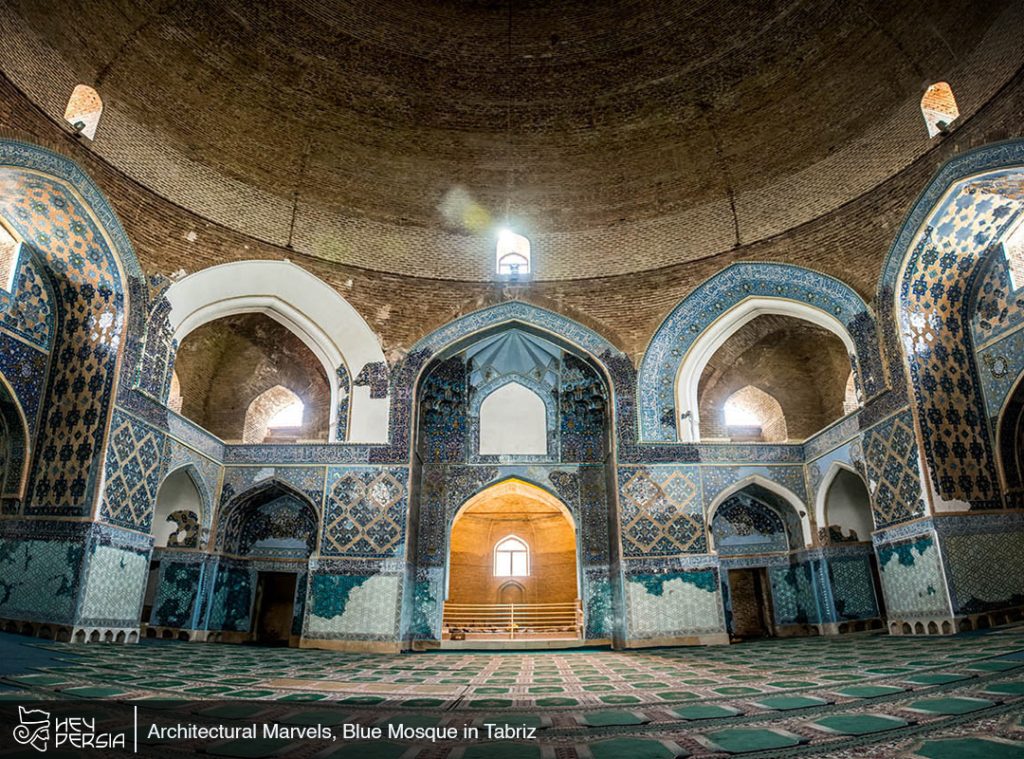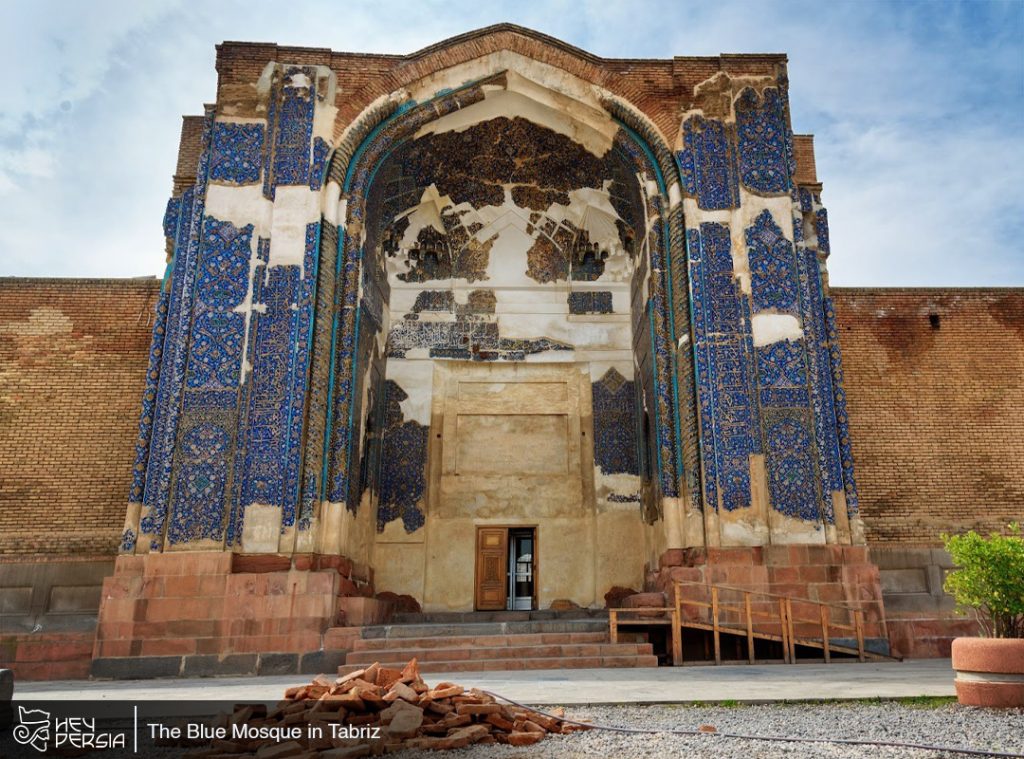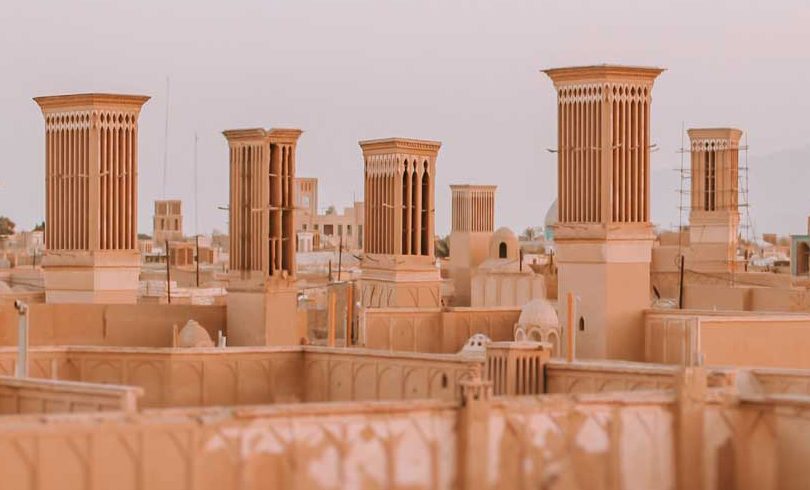The Blue Mosque in Tabriz or Masjed-e Kabud, stands as a testament to the rich history, architectural splendor, and artistic mastery of the region. This article delves into the history, architecture, significance, and cultural impact of the Blue Mosque, shedding light on its enduring legacy. Stay by Hey Persia to learn more.
A Glimpse into History of The Blue Mosque in Tabriz
The Blue Mosque’s history traces back to the late 15th century during the reign of the Qara Qoyunlu dynasty, a Turkic tribal confederation that ruled over parts of Iran. Construction of the mosque began in 1465 under the patronage of Jahan Shah, the ruler of the Qara Qoyunlu dynasty. This period marked a time of flourishing art and culture in Tabriz, which is beautifully in the mosque’s design.
Architectural Influences in The Blue Mosque in Tabriz
The architecture of the Blue Mosque is a striking blend of Persian, Islamic, and Azerbaijani influences. Its distinctive blue tilework, intricate calligraphy, and geometric patterns are hallmarks of Islamic art, while the use of turquoise and cobalt blue tiles, in particular, gives the mosque its renowned name and stunning appearance. The mosque’s design showcases the artistic exchanges and influences that characterized the Silk Road era.
Architectural Marvels of The Blue Mosque in Tabriz
The Blue Mosque’s most iconic feature is its dazzling blue tilework, which adorns both the interior and exterior of the building. These tiles are hand-painted with intricate floral motifs, arabesques, and Quranic inscriptions. The brilliant blue hues, combined with the detailed patterns, create a mesmerizing visual spectacle that continues to captivate visitors.

The Grand Courtyard
Upon entering the mosque, visitors are welcome by a grand courtyard with a central pool and beautifully landscaped gardens. The courtyard’s symmetrical design and surrounding arched colonnades add to the mosque’s aesthetic appeal. It serves as a tranquil space for reflection and prayer, fostering a sense of serenity amidst the bustling city.
Cultural Significance of The Blue Mosque in Tabriz
The Blue Mosque has been a place of worship and spirituality for centuries. It remains an active religious site, attracting both local worshipers and tourists interested in experiencing the Islamic architectural heritage of Iran. The mosque’s prayer hall, adorned with ornate mihrabs (prayer niches), offers a sacred space for Muslims to commune with the divine. You should check the Persian style fashion to learn even more of the culture.
Historical Landmark
Beyond its religious importance, the Blue Mosque holds a prominent place in Iranian history and culture. It stands as a symbol of Tabriz’s historical significance as a Silk Road trading hub and a center of art and scholarship during the medieval period. The mosque is also a testament to the enduring cultural exchanges that took place along the Silk Road.

Preservation and Restoration
Over the centuries, the Blue Mosque has faced challenges such as earthquakes, weathering, and neglect. However, concerted efforts have been made to preserve and restore this architectural gem. Preservation initiatives have involved meticulous restoration work to repair damaged tiles, stabilize the structure, and protect its artistic heritage for future generations.
Visitor Experience
Today, the Blue Mosque is not only a place of worship but also a major tourist attraction. Visitors from around the world are drawn to its exquisite beauty, historical significance, and cultural importance. Tourists have the opportunity to explore the mosque’s interior, admire its intricate details, and learn about its storied past through informative displays.
Photography and Appreciation
Photographers and art enthusiasts are particularly drawn to the Blue Mosque’s photogenic qualities. The interplay of light and shadow on the vivid blue tiles creates a dynamic visual experience. Many visitors find themselves captivated by the mosque’s charm, making it a must-visit destination for those exploring Iran’s cultural and architectural treasures.
The Blue Mosque in Tabriz and the warm welcoming
The Blue Mosque in Tabriz, Iran, is an architectural masterpiece that transcends time and place. Its rich history, breathtaking tilework, and cultural significance make it a symbol of Iran’s enduring artistic and architectural legacy. As a place of worship, historical landmark, and tourist attraction, the Blue Mosque continues to inspire awe and appreciation, inviting visitors to delve into the artistic and cultural tapestry of Tabriz and Iran as a whole. It stands as a testament to the power of human creativity and craftsmanship to leave a lasting mark on the world.








